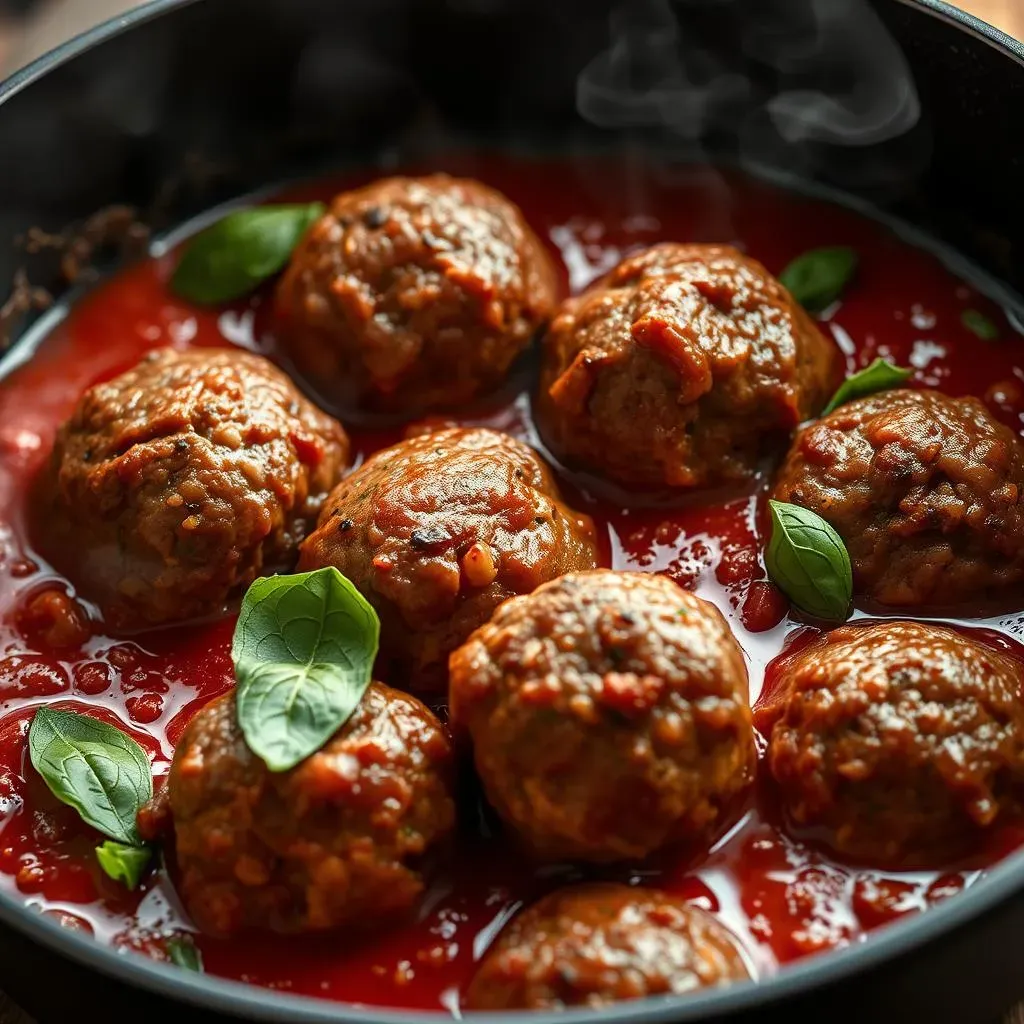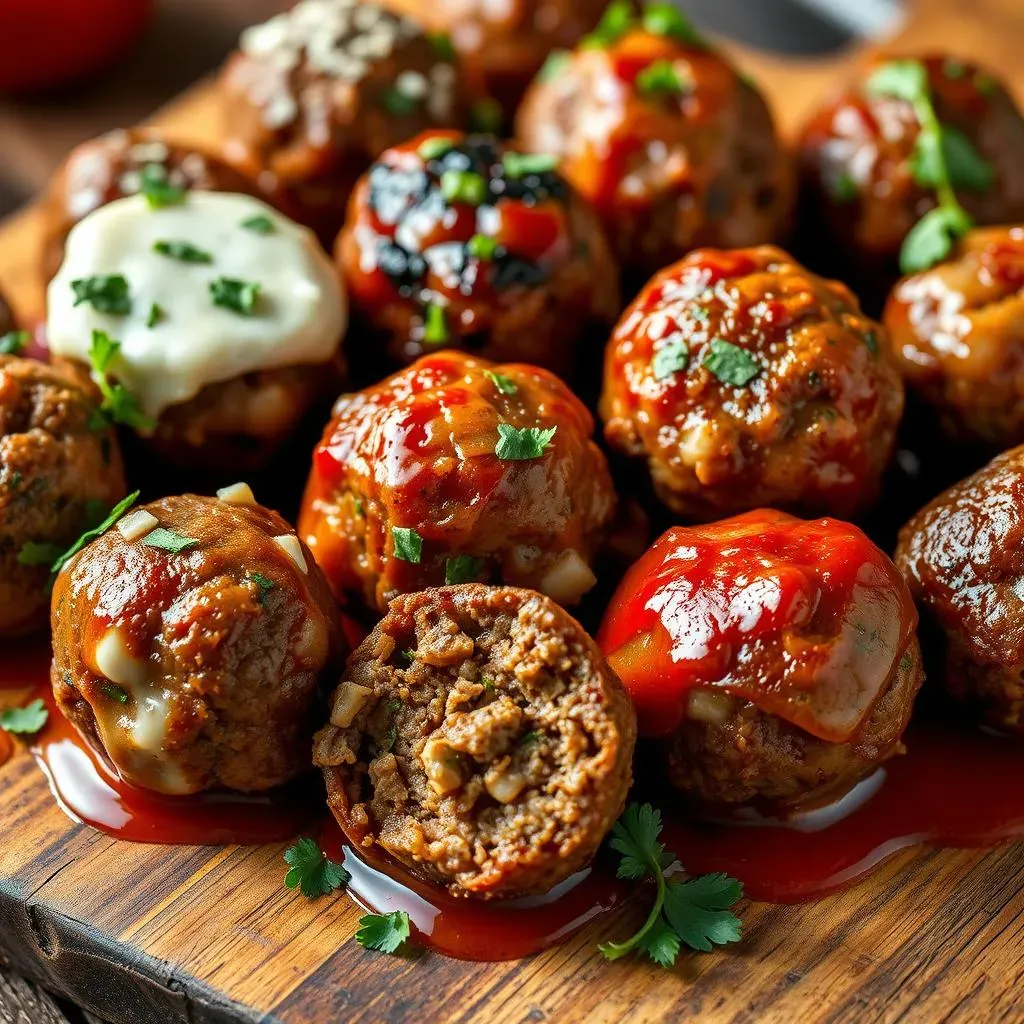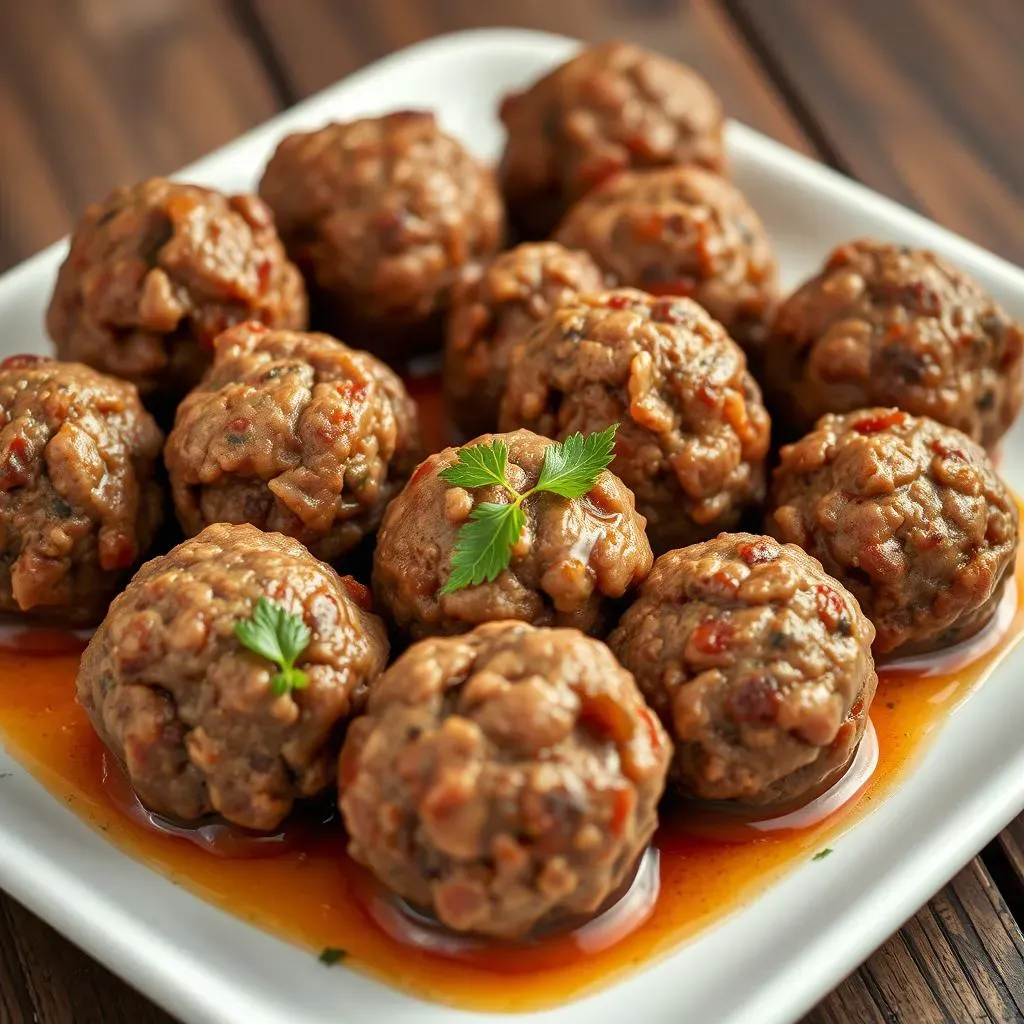Table of Contents
Are you ready to elevate your culinary game and become a meatball maestro? This comprehensive guide dives into the wonderful world of "recipe meatballs ground beef," offering everything you need to create juicy, flavorful, and unforgettable meatballs. We'll start by exploring the fundamental techniques and ingredients that form the foundation of any great meatball recipe. You'll learn how to choose the perfect ground beef, master the art of mixing the right proportions of breadcrumbs and seasonings, and discover the secrets to achieving that perfect texture – tender on the inside, beautifully browned on the outside. But we don't stop there! We'll then journey beyond the basics, exploring creative variations on the classic recipe. From spicy Italian-style meatballs to Asian-inspired variations, you'll find exciting new ways to incorporate your favorite flavors. Finally, we'll equip you with invaluable tips and tricks, sharing insider knowledge to guarantee meatball perfection every single time. Whether you're a seasoned chef or a kitchen novice, this guide is your passport to meatball mastery. Prepare to be amazed by the delicious possibilities that await!
Mastering the Recipe: Meatballs Ground Beef

Mastering the Recipe: Meatballs Ground Beef
Choosing Your Ground Beef
Let's start with the star of the show: the ground beef! The fat content is key here. Leaner ground beef (90% lean) will result in firmer meatballs, while fattier ground beef (80% lean) creates incredibly juicy and tender ones. Think of it like this: the fat acts as a natural lubricant, keeping the meatballs moist and preventing them from drying out during cooking. For a truly decadent meatball, you might even consider a blend of 80% lean ground beef and ground pork – the pork adds extra richness and succulence. But remember, it's all about personal preference! Experiment to find your perfect balance. Want some ideas on how to best use your leftover meatballs? Check out our guide on for future meals.
Once you've chosen your ground beef, it's time to consider the other essential ingredients. Breadcrumbs are crucial for absorbing excess moisture and adding structure to your meatballs. Fresh breadcrumbs are always best, offering a superior texture and flavor compared to their pre-packaged counterparts. Don't forget the eggs! They act as a binder, helping to hold everything together and create a cohesive meatball. Finally, your seasonings are where you can truly personalize your recipe. Freshly minced garlic, herbs like parsley or oregano, and a touch of salt and pepper will all work wonders.
Ground Beef Type | Fat Content | Meatball Texture |
|---|---|---|
90% Lean | 10% Fat | Firmer |
80% Lean | 20% Fat | Juicy & Tender |
Mixing and Shaping Your Meatballs
Now for the fun part: mixing and shaping your meatballs! Gently combine all your ingredients in a large bowl. Avoid overmixing, as this can result in tough meatballs. The goal is to just bring everything together, ensuring that all the ingredients are evenly distributed. Remember that less is more when it comes to mixing; overmixing your meatball mixture will make your meatball tough.
Once your mixture is ready, it's time to shape your meatballs. Using a small cookie scoop or a spoon, portion out equal-sized balls of the mixture. Consistency is key here, as this ensures even cooking. Aim for meatballs that are roughly 1 ½ inches in diameter. Too small, and they might dry out; too large, and they may not cook through properly. After shaping, you can immediately cook them or freeze them for later use. For more information on this method check out our guide.
- Gently combine ingredients.
- Avoid overmixing.
- Use a cookie scoop for consistent size.
- Aim for 1 ½-inch diameter meatballs.
Cooking Your Meatballs to Perfection
Finally, it's time to cook your magnificent creations! There are several methods to choose from, each offering its own unique advantages. Pan-frying in olive oil gives you beautifully browned meatballs with a crispy exterior. Baking in the oven is a healthier option, resulting in tender meatballs with a slightly softer exterior. And slow cooking in a sauce allows for maximum flavor infusion and incredible tenderness. No matter which method you choose, the key is to cook your meatballs slowly and evenly, ensuring that they reach an internal temperature of 165°F (74°C) to guarantee they are fully cooked and safe to eat. For some inspiration on variations try our article.
Once cooked, your meatballs are ready to be enjoyed! Serve them as part of a hearty pasta dish, use them as the star of a meatball sub, or simply savor them on their own. The possibilities are endless, and the only limit is your imagination. Don't forget to check out our for more tips and tricks. Happy cooking!
Beyond the Basics: Creative Recipe Meatballs Ground Beef

Beyond the Basics: Creative Recipe Meatballs Ground Beef
Spice Things Up: Flavor Adventures
Let's ditch the ordinary and explore some exciting flavor combinations! Think beyond the classic Italian seasonings. How about a fiery kick with our spicy beef meatballs? Or a taste of the Mediterranean with herb beef meatballs? The possibilities are endless! You could add a smoky depth with chipotle peppers or a bright citrusy zing with lemon zest and oregano. For a truly global twist, consider incorporating Asian-inspired flavors like ginger, soy sauce, and sesame oil. Don't be afraid to experiment! Your taste buds will thank you. For more inspiration, check out our article on beef meatball recipe variations for even more ideas.
Adding different cheeses can also elevate your meatballs to new heights. Instead of just Parmesan, try incorporating crumbled feta for a salty tang, or a creamy mozzarella for extra richness. A sharp cheddar could add a surprising depth of flavor, while a creamy goat cheese could provide a delightful counterpoint to the savory beef. Remember, the best recipe is one that reflects your personal preferences and culinary creativity. Want some more ideas? Check out our best beef meatball recipe for inspiration.
Cheese Type | Flavor Profile | Meatball Pairing Suggestion |
|---|---|---|
Feta | Salty, Tangy | Greek-inspired meatballs |
Mozzarella | Creamy, Mild | Classic Italian meatballs |
Cheddar | Sharp, Nutty | Southwest-style meatballs |
Meatball Makeovers: Beyond the Classic
Now let's talk about transforming your meatballs into something truly unique! One fun idea is to stuff your meatballs. Imagine a core of melted mozzarella, a burst of sun-dried tomatoes, or even a spicy jalapeño center. This adds a delightful surprise to each bite and elevates your meatballs from simple to spectacular. Another option is to use different types of meat, such as a blend of beef and lamb for a richer flavor. Or try using ground turkey or chicken for a leaner option.
Beyond the meat itself, you can experiment with the cooking method. Instead of pan-frying or baking, try slow cooking your meatballs in a flavorful sauce. This creates incredibly tender meatballs, infused with the delicious flavors of the sauce. Alternatively, you can explore grilling your meatballs for a smoky char that adds another layer of complexity. For extra flavor, consider adding a glaze to your meatballs during the last few minutes of cooking. A sweet and sour glaze, a tangy BBQ sauce, or a spicy sriracha mayo could all create a unique and unforgettable flavor profile. We have a great article on beef meatball recipe ideas to get you started.
- Stuff your meatballs with cheese or other ingredients.
- Experiment with different types of ground meat.
- Try slow cooking, grilling, or adding a glaze.
Recipe Meatballs Ground Beef: Tips and Tricks for Perfection

Recipe Meatballs Ground Beef: Tips and Tricks for Perfection
Don't Overmix Your Meat
One of the biggest mistakes home cooks make is overmixing the meatball mixture. Think of it like this: you're working with delicate muscle fibers. Overmixing toughens them, resulting in dense, chewy meatballs. Instead, gently combine your ingredients until they're just incorporated. A few lumps are okay—they'll disappear during cooking. Trust me, a slightly less-than-perfect mix translates into a much more tender final product. For a deeper dive into meatball secrets, check out our guide.
Another crucial tip is to ensure your ingredients are at the right temperature. Cold ingredients can lead to uneven cooking and a less-than-stellar texture. Aim for room temperature ingredients whenever possible. This allows the fat in the ground beef to render properly, resulting in juicy meatballs. Also, make sure your oven is preheated to the correct temperature to ensure even cooking. If you want to go for a different approach, you can explore as well.
Mistake | Solution |
|---|---|
Overmixing | Gently combine ingredients |
Cold Ingredients | Use room temperature ingredients |
Size Matters: Meatball Dimensions
The size of your meatballs directly impacts their cooking time and texture. Too small, and they'll cook too quickly, potentially drying out. Too large, and the center might remain undercooked while the outside burns. A good rule of thumb is to aim for meatballs that are around 1 ½ inches in diameter. This size ensures even cooking and a perfectly balanced meatball. Using a cookie scoop ensures consistency, leading to more even cooking and a better outcome. If you want a quick meal, try our recipe.
Another often-overlooked factor is resting your meatballs. After cooking, allow them to rest for a few minutes before serving. This allows the juices to redistribute within the meatballs, resulting in a more tender and flavorful final product. This is a simple step that can make a huge difference in the overall quality of your meatballs. If you're working with a large batch, you can even store them for later use. Check out our guide for more information.
- Aim for 1 ½-inch diameter.
- Use a cookie scoop for consistency.
- Rest meatballs after cooking.
Sauce It Up: The Perfect Accompaniment
While the meatballs themselves are the stars of the show, the sauce plays a crucial supporting role. A rich, flavorful sauce elevates the entire dish to new heights. Consider using a classic marinara sauce, a creamy tomato sauce, or even a bold and spicy arrabiata sauce. The choice is yours! But remember that the sauce shouldn't overpower the meatballs. It should complement their flavor, enhancing their deliciousness without masking their unique character. Want a lighter option? Try our recipe.
Finally, don't be afraid to experiment! Meatballs are incredibly versatile, and they pair well with a wide range of flavors and ingredients. Try adding different herbs and spices to your sauce, or incorporating vegetables like mushrooms or zucchini. You can even add a touch of sweetness with a splash of balsamic vinegar or a drizzle of honey. The key is to have fun and let your creativity shine. For some inspiration, check out our which offers many flavor combinations.